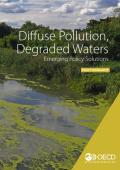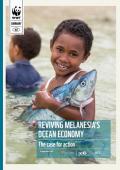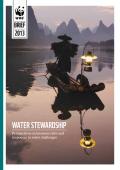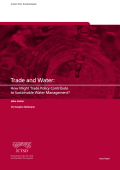
Climate change will affect all types of infrastructure, including energy, transport and water. Rising temperatures, increased flood risk and other potential hazards will threaten the reliable and efficient operation of these networks, with potentially large economic and social impacts. Decisions made now about the design, location and operation of infrastructure will determine how resilient they will be to a changing climate.
This paper provides a framework for action aimed at national policymakers in OECD countries to help them ensure new and existing infrastructure is resilient to climate change. It examines national governments’ action in OECD countries, and provides recent insights from professional and industry associations, development banks and other financial institutions on how to make infrastructure more resilient to climate change.

After decades of regulation and investment to reduce point source water pollution, OECD countries still face water quality challenges (e.g. eutrophication) from diffuse agricultural and urban sources of pollution, i.e. pollution from surface runoff, soil filtration and atmospheric deposition. The relative lack of progress reflects the complexities of controlling multiple pollutants from multiple sources, their high spatial and temporal variability, the associated transactions costs, and limited political acceptability of regulatory measures.
The OECD report Diffuse Pollution, Degraded Waters: Emerging Policy Solutions (OECD, 2017) outlines the water quality challenges facing OECD countries today. It presents a range of policy instruments and innovative case studies of diffuse pollution control and concludes with an integrated policy framework to tackle this challenge. An optimal approach will likely entail a mix of policy interventions reflecting the basic OECD principles of water quality management – pollution prevention, treatment at source, the polluter pays and the beneficiary pays principles, equity, and policy coherence.

During the past few years, the term “Blue Economy” or “Blue Growth” has surged into common policy usage, all over the world. For some, Blue Economy means the use of the sea and its resources for sustainable economic development. For others, it simply refers to any economic activity in the maritime sector, whether sustainable or not.
Despite increasing high-level adoption of the Blue Economy as a concept and as a goal of policy making and investment, there is still no widely accepted definition of the term. To fill this gap in shared understanding about what characterises a sustainable Blue Economy, and to help ensure that the economic development of the ocean contributes to true prosperity, today and long into the future, WWF has developed a set of principles.

As problems of governance, scarcity and pollution have spread and intensified, interest in protecting water has diversified. More than ever before, business leaders realise that their long-term profitability – even viability – depends on the right quantity and quality of water available at the right time and place to meet the needs of people, business and ecosystems. This business interest triggered the creation in 2008 of WWF’s Water Stewardship Programme.
The concept of water stewardship serves to unite a wide set of stakeholders interested in water management. In common usage, it often refers to business action on water challenges. In this brief, we are using the term in this common sense, as it relates to business – while acknowledging that there is no universally agreed definition. We define Water Stewardship for business as a progression of increased improvement of water use and a reduction in the water-related impacts of internal and value chain operations. More importantly, it is a commitment to the sustainable management of shared water resources in the public interest through collective action with other businesses, governments, NGOs and communities

Water is at the centre of economic and social development: it is vital to maintain health, generate energy and create jobs while sustaining the natural environment. A wide variety of economic, social and environmental services are derived from water resources, ranging from water supply and hydropower generation to navigation and recreation. Water resources are also an integral part of the natural environment, supporting biodiversity as well as underpinning the agriculture which provides the world’s food. This paper identifies some of the key intersections between trade policy and water management, in areas such as agriculture, hydropower generation, water services and wastewater management. While the local nature of water systems and the diversity of water management objectives is not conducive to the application of trade instruments to enforce a prescriptive, one-size-fits-all, approach to water management, the paper identifies a range of areas in which trade policy could support the sustainable management of water.
